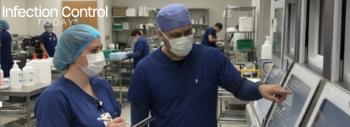
Bioterrorism Survey of OR Nurses Shows Value of Self-Study for Increasing Preparedness and Knowledge
RED BANK, N.J. -- Survey research findings by Ansell Limited to be released as a poster presentation at the Association of periOperative Registered Nurses (AORN) 54th Congress March 11-15, 2007, in Orlando show that self-study training modules taken by operating room attending nurses at healthcare facilities can significantly increase their perceived level of knowledge and preparedness for a bioterrorist threat, often by at least twice as much.
A survey of attendees at a previous AORN Conference(1) indicated that the operating room nurses ranking of their perceived level of knowledge and preparedness after completing a self-study module on protection from biological agents increased from a rating of 4.8 to a rating of 7.3 (on a scale of one to 10) among those nurses whose facilities offered training on bioterrorism threats. In comparison, among nurses whose facilities did not offer such training, the perceived level of knowledge and preparedness increased from a rating of 3.0 to a rating of 6.5.
As part of the survey, the nurses were asked to rank their perceived level of knowledge and preparedness for a biological attack in one of the six Category A(2) agents in their hospitals. They were then given a self-study module on Biological Agents & Barrier Protection. After reading it, they were again asked to rank their perceived level of knowledge and preparedness.Â
This survey shows that the self-study module is a highly satisfactory method of educating healthcare workers about bioterrorism attacks, said Janie Thomas, RN/BSN, clinical consultant at Ansell Healthcare. Methods such as self-study not only are a good way for hospitals that currently do not have such training to educate their healthcare professionals, but also can serve as an adjunct to any existing training, she added.
The study found no statistical difference in the level of preparedness by region. It also found that 90 percent of respondents believed there are differences in barrier properties between various gloving materials, and that 79 percent did not believe vinyl-only gloves were an adequate protection against bioterrorist agents.
This effort is another example of how Ansell is committed to partnering with the facilities it serves in order to ensure that the highest quality training is available for the healthcare professionals, especially in terms of barrier protection from bioterrorism, biohazards and infectious diseases, said Diego Rodriguez, Ansell Heathcare North America marketing director. Â
References:
1. The survey was returned by 290 operating room attending nurses from 44 states at the 2005 AORN Congress in New Orleans.
2. The following diseases are listed by the Centers for Disease Control and Prevention (CDC) as high-priority biological diseases: anthrax, smallpox, botulism, tularemia, viral hemorrhagic fever, and plague. (Source:
Source: Ansell Limited
Newsletter
Stay prepared and protected with Infection Control Today's newsletter, delivering essential updates, best practices, and expert insights for infection preventionists.





